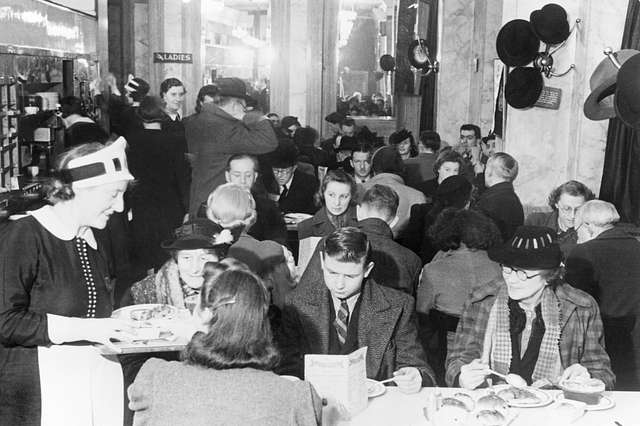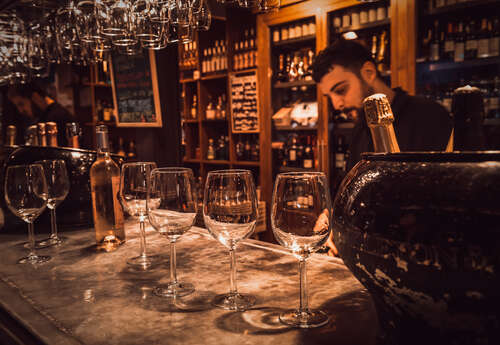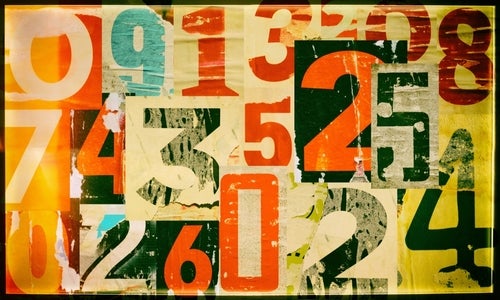What is the latest thinking on the potentially damaging effects of light on sparkling wine—and what can be done to avoid them?
The famous Italian scientist Galileo Galilei is quoted as saying “Wine is sunlight, held together by water.” But once the wine is bottled, light can ruin it in less than an hour.
Plumpton Wine Division (the UK center for wine education, research, and training), The Champagne & Sparkling Wine World Championships (CSWWC), and Brad Greatrix, winemaker at Nyetimber, have joined forces and used the summer solstice to raise awareness of the dangers of light strike, particularly for wines bottled in clear glass. Light-strike taint (goût de lumière, in French) occurs when ultraviolet and certain visible light wavelengths react with the wine within as little as 60 minutes to produce unpleasant sulfur compounds. Still and sparkling rosé wines are the most commonly affected, as many producers still choose to showcase the pink color of their wines through colorless glass.
With the support of Wine GB (as part of English Wine Week), Plumpton Wine Division, CSWWC, and Brad Greatrix urged winemakers, wine merchants, and customers to take action.
“At Plumpton College, light strike has been on the syllabus for many years and a number of research projects have been conducted. All wine graduates have a clear understanding of the risks involved,” commented Dr Greg Dunn, Head of Plumpton Wine Division. “Many in the broader wine trade and general public, however, remain oblivious to this problem. So, we wanted to use the summer solstice as Light Strike Awareness Day, the aim of which is to highlight the problem of light strike as widely as possible, and to outline the simple steps that can be taken to prevent wine from being irreversibly damaged.” Plumpton Wine Estate recently took the final steps to move their sparkling Rosé into green glass.
“Light-strike taints can start to develop as soon as the wine bottle is removed from its cardboard box,” commented Tom Stevenson, the UK sparkling-wine expert, founder of the CSWWC, and the first person to demonstrate to a live audience (at the International Sparkling Wine Symposium in 2013) the progressively foul light-strike aromas in the same wine bottled in different colored glass. He stated: “Clear glass is most commonly used for Rosé and Blanc de Blancs styles. Producers always blame the marketing people for demanding clear glass bottles, and whereas this might be true, it is fundamentally a quality-control issue, and for the sake of long-term reputation, no self-respecting producer should allow marketing to overrule quality control. They should switch to dark glass bottles, tick the box, and move on. English sparkling wine is ahead of the game, as is Trentodoc, but Champagne lags behind. All the clear glass bottles in my cellar have always been double-bagged in black plastic, and since I introduced this safeguard at the CSWWC in 2015, the instance of faulty bottles has dropped by 94 percent.”
Brad Greatrix, winemaker for Nyetimber, is hugely passionate about the topic of light strike. “I do as much as I can to raise awareness of light strike. Every year a lot of perfectly good wine is spoiled because it is stored in clear bottles and exposed to sunlight or the wrong type of indoor lighting. At Nyetimber we’ve been filling our wines into dark amber bottles since the 2009 vintage to protect against these exposures. Once one learns to recognize the sulfury smell of a light-affected bottle, you’ll be amazed at how prevalent it is in wines filled into transparent packaging!”
Action plans
The anti-light-strike campaigners have put together the following recommendations to support different groups:
Winemakers:
- Should package their wines in dark glass bottles (colored wrapping and individual cardboard containers are band-aids quickly pulled off by consumers).
- Until they stop using clear glass bottles, ensure bottles are kept covered at all times in the winery, by using opaque shrink wrap on bins and stillages, or by placing wine immediately into cardboard boxes.
- Installing lighting that minimizes damage to wine in the winery, bottling, and storage areas (even green bottles offer only 50% protection).
Wine merchants, bars, and restaurants:
- Keep stock at risk of light strike away from direct light, including window displays.
- Change damaging lighting such as fluorescent tubes to more wine-friendly low-energy bulbs.
- Stock wines from wineries who package their wine in dark glass.
Customers:
- Keep wine at home in cardboard boxes and in cool, dark locations.
- When enjoying wine outside, keep the wine away from direct light or, even better, wrap the bottle in aluminium foil.
- Choose wines packaged in dark glass.
Light-strike facts
Most susceptible wine styles:
- Sparkling white and rosé, due to extended lees aging.
- Still white and rosé wine.
Most damaging light:
- Wavelengths below 510 nm, particularly between 370nm (UV) and 442nm (blue).
- Direct sunlight.
- Fluorescent tubes, xenon and metal-halide lamps in close proximity to wine.
Most susceptible glass bottles:
- Colorless or flint glass.
- Blue-colored bottles.
- Light-green-colored bottles.
Glass bottles providing greater protections:
- Bottles with opaque coverings.
- Dark-brown bottles.
- Amber bottles.
- Dark-green bottles.
Key reactions
Light reacts with riboflavin (vitamin B2), naturally present in wine, which photo-oxidizes methionine
(a sulfur-containing amino acid also present in wine) to form undesirable sulfur compounds such as dimethyl disulfide or DMDS (onions, cooked cabbage), dimethyl sulfide or DMS (stale cabbage), hydrogen sulfide or H2S (rotten eggs), methanethiol or MT (halitosis, stagnant water), and ethyl methyl sulfide or EMS (wet wool). Initially the smell can be just off or not clean, but put all these compounds together and they will build into the smell of rotting flesh and sewage. Light may also bleach or yellow the color of a wine and degrade the fruity aromas of esters.






